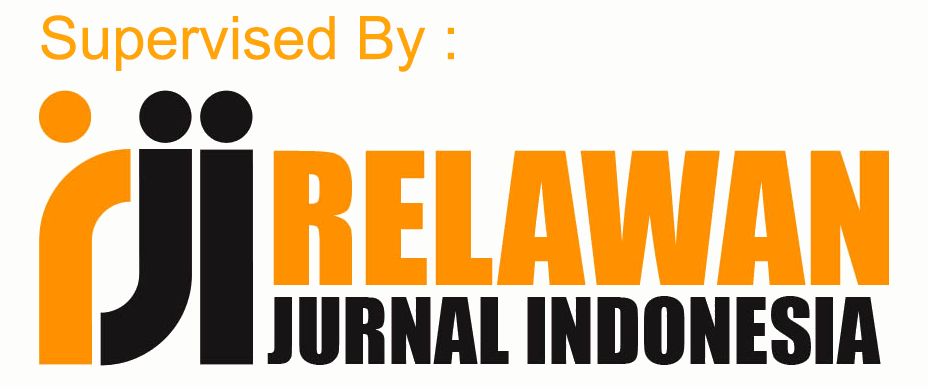PENGARUH EKSTRAK ETANOL DAUN MAHONI (Swietenia mahogani L.) SEBAGAI FUNGISIDA NABATI DALAM MENGENDALIKAN Colletotrichum acutatum PENYEBAB ANTRAKNOSA PADA CABAI MERAH (Capsicum annuum L.)
Abstract
Colletotrichum acutatum is a fungal pathogen that causes anthracnose which usually attacks chilies. Generally, in controlling anthracnose disease.. The use of synthetic fungicides that are used for a long time can cause various harmful effects, especially on the environment. So other alternatives by using vegetable fungicide obtained from ethanol extract of mahogany leaves. This study aims to determine the effect of ethanol extract of mahogany leaves and determine the best concentration of ethanol extract mahogany leaves as vegetable fungicide in controlling Colletotrichum acutatum causes anthracnose disease in red chili (Capsicum annuum L.). This study used a completely randomized) design with seven concentrations of mahogany leaf extract, namely 0 %; 0.5 %; 1 %; 1.5 %; 2 %; 2.5 %; 3 %. Each treatment repeated four times. The data obtained were analyzed by ANOVA and continued with the Least Significant Difference (LSD) test with a level of 5 % (α= 5 %). The results showed that ethanol extract of mahogany leaves had a significant effect on mushroom colony diameter and fruit weight loss. However, it had no significant effect on disease severity and fruit weight loss. The best concentration of ethanol extract of mahogany leaves was shown in 1.5 % treatment.
References
Andriyani, F., S. Purwanti. (2019). Uji Potensi Ekstrak Daun Suren dalam Menghambat Pertumbuhan Jamur. Jurnal Akademika Biologi. Vol. 8(1): 35-39.
Anjayani, D., Ambarwati, E. (2021). Quality and Storage Life of Red Chili Pepper (Capsicum annuum L.) as a Response to Various Biofertilizer. J. Vegetalika. Vol. 10(3): 159-173
Amelia, M., Yusriadi., Budi, I.S. (2020). Pengaruh Ekstrak Daun Kenikir (Cosmos caudatus kunth.) Terhadap Cendawan Colletotrichum sp. pada Buah Cabai Rawit. Proteksi Tanaman Tropika. Vol. 3(1): 157-163
Ayyappadhas, R. J. C. (2012). Preliminary Studies on Antimicrobial Activity of Swietinia macrophylla Leaf Extract. Int J Pharm Sci Rev Res. Vol. 16(2): 1-4.
Badan Pusat Statistik. (2019). Produksi Cabai Besar, Cabai Rawit, dan Bawang Merah. BPS Provinsi Lampung. Lampung.
Costa, J., Sepulveda, M., Gallardo, V., Cayun, Y., Santander, C., Ruiz, A., Reyes, M., Santos, C., Cornejo, P., Lima, N., and Santos, C. (2022). Antifungal Potential of Capsaicinoids and Capsinoids from the Capsicum Genus for the Safeguarding of Agrifood Production: Advantages and Limitations for Environmental Health. Microorganisms. Vol. 10:1-22
Darmadi, A. A. K., S. K. Sudirga, N. L. Suriani, and I. G. A. S. Wahyuni. (2019). Antifungal Activities of Cinnamon Leaf Extracts Agaist Shigatoka Fungus (Pseudocercospora fijiensis). 6 th International Conference on Sustainable Agriculture, Food and Energy. IOP. Conf. Series: Earth and Environmental Science. IOP Publishing.
Dean, R., J. A. Kan, Z. A. Pretorius, K. E. Hammond, A. D. Pietro, P. D. Spanu, Foster, D. Ralph, A. L. Jan. (2012). Top 10 Fungal Pathogens in Molecular Plant Pathology. Molecular Plant Pathology. Vol. 13(4): 414-430.
Duila, M. I. (2017). Ekstrak Tembakau (Nicotiana tabacum L.) sebagai Fungisida Nabati Pada Antraknosa Cabai Merah yang disebabkan Jamur Colletotrichum sp. Secara in Vitro.
Firmansyah, M. Y., Sastrahidayat, I.R., Djauhari, S. (2016). Studi Identifikasi Dan Cara Inokulasi Penyakit Antraknosa Pada Tanaman Sansevieria Trifasciata. Jurnal hama dan Penyakit Tumbuhan. Vol. 4(3): 125-13
Kamaraj, C., A. Bagavan, G. Elango, A. A. Zahir, G. Rajakumar, S. Marimuthu, T. Santhoshkumar, and A. A. Rahuman. (2011). Larvicidal Activity of Medicinal Plant Extracts Against Anopheles subpictus and Culex tritaeniorhynchus. Indian J Med Res 134:101-106
Nugroho, L. H. (2016). Red Pepper (Capsicum spp.) Fruit: A Model for The Study of Secondary Metabolite Product Distribution and Its Management. Prosiding AIP. Vol. 1744(1): 1-7
Nurmayulis, Syabana, M.A., Syafendra, Y. (2013). Pengendalian Penyakit Antraknosa (Colletotrichum capsica) Pada Cabai Merah dengan Beberapa Bakteri Sebagai Agen Biokontrol. Jurnal Agroekoteknologi. Vol. 5(1): 33-44
Palupi, H., Yulianah, I., dan Respatijarti. (2015). Uji Ketahanan 14 Galur Cabai Besar (Capsicum annuum L.) Terhadap Penyakit Antraknosa (Colletotrichum Spp) Dan Layu Bakteri (Ralstonia solanacearum). Jurnal Produksi Tanaman. Vol. 3(8). 640-648
Purnomo, D. (2008). Aplikasi Getah Dua Genotipe Pepaya Betina sebagai Biofungisida Untuk Mengendalikan Penyakit Antraknosa (Colletotrichum capsici (Syc.) Butler & Bisby) Pada Cabai Merah Besar (Capsicum annuum L.).
Sitepu, I. S, Suada, I. K., Susrama, I. G. K. (2012). Uji Aktivitas Antimikroba Beberapa Ekstrak Bumbu Dapur Terhadap Pertumbuhan Jamur Curvularia Lunata (Wakk.) Boed. Dan Aspergillus Flavus Link. E-Jurnal Agroekoteknologi Tropika. Vol. 1(2): 107-114
Sulistyaningrum, A., Darudriyo. (2018). Penurunan Kualitas Cabai Rawit Selama Penyimpanan Dalam Suhu Ruang. Jurnal Agronida. Vol.4 (2): 64-71
Trisnawati, D., Nugroho, L. P. E., dan Tondok, E.T. (2019). Pengaruh Ekstrak Daun Sirih dan Metode Ekstraksinya Dalam Menghambat Penyakit Antraknosa pada Cabai Pascapanen. Jurnal Fitopatologi. vol. 15(6): 213-227
Utami, N., Auliah, A., Dini, I. (2022). Studi Kandungan Senyawa Metabolit Sekunder beberapa Ekstrak Tai Anging (Usnea sp.) dan Uji Bioaktivitasnya terhadap (Candida albicans). Jurnal Chemica. Vol. 23(1): 90-98
Yendi, T.P., Efri., Prasetyo, J. (2015). Pengaruh Ekstrak Beberapa Tanaman Famili Zingiberaceae Terhadap Penyakit Antraknosa Pada Buah Pisang. Jurnal Agrotek Tropika. Vol. 3(2): 231-235.

This work is licensed under a Creative Commons Attribution 4.0 International License.

This work is licensed under a Creative Commons Attribution License






